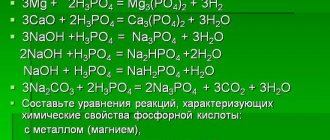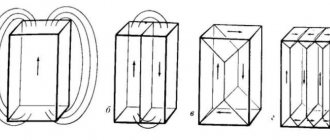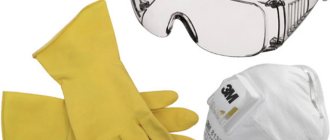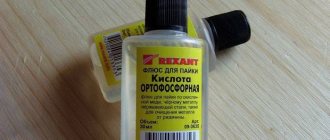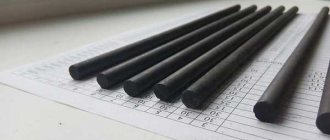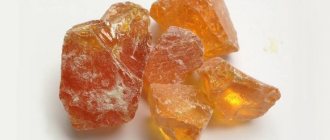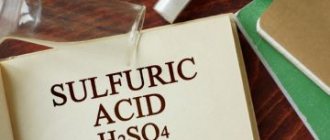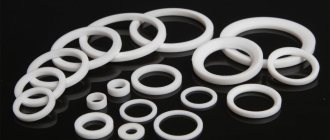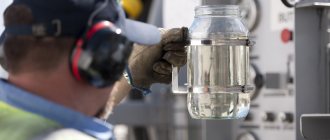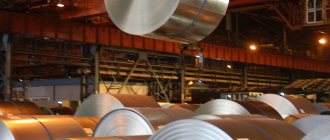The present invention relates to a lubricant for mechanical processing of metals containing castor oil in an amount of 40-60 wt.%, oleic acid in an amount of 10-30 wt.%, stearic acid in an amount of 17-25 wt.% and finely ground sulfur in an amount of 5 -7 wt.%. The technical result of the present invention is the creation of a grease used in the operations of drilling, threading, reaming, boring structural and tool steels, especially hardened to hardness HRCe 40-45, stainless and heat-resistant steels, difficult-to-cut materials, non-ferrous metals and their alloys, using available metal-cutting tools from steel R6M5, R9, R18 on machines and in manual processing. 4 tables
The invention relates to plastic lubricants for mechanical processing of metals and can be used in the operations of drilling, threading, reaming, boring structural and tool steels, especially hardened to a hardness of HRCa 40-45, stainless and heat-resistant steels, difficult-to-machine materials, non-ferrous metals and their alloys.
A known lubricant for mechanical processing of metals (Patent No. 1671676SU. Lubricant for mechanical processing of metals. “Invention of the countries of the world”, No. 11, 1991), the composition of which is as follows, wt.%: sulfur 15-20, rosin 8-12, stearic acid 25 -35, sodium salt of higher fatty acids 10-15, polytetrafluoroethylene 3-5, drying oil - the rest.
The lubricant allows processing stainless steels, but does not allow cutting threads in hardened structural and tool steels and performing deep drilling due to breakage of the cutting tool or its rapid dulling. In addition, the lubricant has a complex composition.
Lubricant according to a.s. is also known. No. 1140460, C10M 141/12, 1983, containing the following composition, wt.%: potassium iron sulfide 0.5-1.0, molecular weight polyethylene (2-4) 10 5 1-2, water 4-6, oleic acid 10-12, tetramethyl lead 0.2-0.4, chlorosulfonic acid 0.1-0.3, mineral oil - the rest.
Significant disadvantages of the known lubricant are the complex composition and complexity of preparation, the narrow range of processed materials, and the inability to use the lubricant for cutting threads in hardened structural and tool steels.
Also known from the prior art are documents SU 1685980, 10/23/1991 and US 5939366, 08/17/1999, which disclose compositions that can be used in metalworking. A significant drawback is the complex preparation process; the reliable number of components included in the lubricant is not indicated.
The closest to the proposed lubricant is lubricant according to a. With. No. 595368, C10M 141/02, containing the following composition, wt.%: oleic acid 20-23, glycerin 10-13, molybdenum disulfide 28-31, stearin - the rest.
The known lubricant is used to increase durability when thread forming with extruding taps (rolling tools) in thin-walled metal structures, but does not increase the durability of the tool when processing thick-walled material from hardened structural and tool steels with a hardness of up to HRCе 40-45, stainless and heat-resistant steels, difficult-to-cut materials, and also oxidizes non-ferrous metals. The prototype lubricant poorly removes chips from the cutting zone and heat, which leads to rapid tool wear.
Another known lubricant close to the proposed one is lubricant for abrasive processing of metals su 1685980, 10.23.1991, containing the following composition, wt.%: sulfur 20-43, mineral oil 3-5, molybdenum diselenite 5-10, polyisobutylene 0.3-0 .5, boron nitride 15-20, ferric chloride 3-5, ferrous sulfate 3-5, oleic acid 15-20, stearic acid the rest.
The well-known lubricant is used for abrasive processing of metals, in particular for grinding steel R12FZ and R6M5, but cannot be used for processing metals by cutting hardened structural and tool steels with a hardness of up to HRCe 40-45, stainless and heat-resistant steels, and difficult-to-cut materials.
The density of the known lubricant is several times higher than that described in the present invention, which makes it difficult to introduce it into the cutting zone of the tools. Oleic acid introduced into the lubricant reacts with other components, changing its structure.
The lubricant prototype has a complex composition and a labor-intensive manufacturing method.
The purpose of the invention is to create a plastic lubricant for mechanical processing of metals, in particular for drilling, threading, reaming, boring structural and tool steels, especially hardened to hardness HRCе 40-45, stainless and heat-resistant steels, difficult-to-cut materials, non-ferrous metals and their alloys, using available metal-cutting tools from steel R6M5, R9, R18 on machines and in manual processing.
The problem is solved by the claimed invention, the object of which is a lubricant containing stearic acid, oleic acid, finely ground sulfur, differing from the prototype in that the main component is castor oil in the following ratios of components, wt.%:
Castor oil – 40-60
Oleic acid – 10-30
Stearic acid – 17-25
The components that make up the lubricant do not react chemically with each other.
Castor oil contains unsaturated fatty acids and no more than 0.1-9% oleic acid. The introduction of oleic acid in the indicated percentages into the main component increases its fluidity, increases its thermal conductivity, and reduces the effect of friction and cutting force. All this makes it possible to better remove heat and chips from the cutting zone and increase tool life. This is especially important when drilling and cutting threads in structural and tool steels hardened to a hardness of HRCе 40-45, stainless and heat-resistant steels, and difficult-to-cut materials. This lubricant is not subject to oxidation when exposed to air and light, and does not itself oxidize non-ferrous metals and their alloys, which is especially important when processing copper.
The lubricant is obtained as follows. Castor oil is heated to a temperature of 60°C, stirring slowly, and oleic acid is added to the castor oil. After obtaining a homogeneous mass, add stearic acid slowly with constant stirring. Stir the solution until the stearic acid is completely dissolved. Allow the resulting solution to cool to a temperature of 30°C and add finely ground sulfur, stirring thoroughly. Cool the resulting lubricant naturally to room temperature.
The proposed lubricant is a plastic substance from white to light yellow.
In accordance with the claimed invention, samples of the claimed lubricant were prepared, the composition of which is given in Table 1.
The results of comparative tests of lubricants 1-3 with the prototype (composition 4) are given in Table 2, Table 3 and Table 4. Table 2 shows the test results carried out when cutting M12 threads in steel 40Х GOST 4543-71 with a hardness of HRCе 28 32. Table 3 shows the test results carried out when cutting M12 threads in steel 40Х GOST 4543-71 with a hardness HRCе 40 45. Table 4 shows the test results carried out when drilling 01.5 mm holes in molybdenum MCh-1-0.5-V-P2 Yae0.021.055 TU.
| Table 1 | ||||
| No. No. | Castor oil | Oleic acid | Stearic acid | Sulfur |
| 1 | 48 | 30 | 17 | 5 |
| 2 | 60 | 16 | 17 | 7 |
| 3 | 60 | 10 | 25 | |
| table 2 | |||||
| No. No. P/P | Cutting speed, m/min | Durability of taps in the number of holes cut, pcs. | |||
| 1 | 12,6 | 5,5 | 10 | 27 | 511 |
| 2 | 11,8 | 5,0 | 10 | 23 | 520 |
| 3 | 13,2 | 5,8 | 10 | 23 | 507 |
| 4 | 28,0 | 13,6 | 18 | 46 | 157 |
| Table 3 | ||||||
| No. No. P/P | Torque moment of the 1st tap, Nm | Torque of the 2nd tap, Nm | Cutting speed, m/min | Lubricant consumption per 1000 holes, g | Durability of taps in the number of holes cut, pcs. | |
| 1 | 22,8 | 13,5 | 5 | 83 | 13 | |
| 2 | 17,8 | 9,3 | 5 | 78 | 15 | |
| 3 | 26,6 | 16,1 | 5 | 90 | 8 | |
| 4 | 78,0* | — | 2 | 146 | ||
| * When trying to cut a thread, tap No. 1 breaks. | ||||||
CLAIM
A lubricant for mechanical processing of metals containing castor oil, stearic acid, finely ground sulfur, characterized in that the lubricant additionally contains oleic acid in the following ratio of components, wt.%.
It belongs to the category of unsaturated acids and is (of all unsaturated acids) the most common in nature, especially in vegetable oils (olive, palm, sunflower) and fats of animal origin. Externally, it is an oily liquid without color or odor, although the acid used for industrial purposes (rubber production, metalworking) may have a yellowish tint. This type of acid received its name “oleic” thanks to olive oil, where it contains more than 80%. However, it is also found in many other products, in particular in peanut butter - about 65%, in sunflower and beef fat - about 40%.
Properties and scope of application of oleic acid
This type of acid is harmless when it comes into contact with human skin and does not dissolve in water. For removal you can use alcohol, acetone, chloroform, ether. During operation, it is necessary to take into account that when interacting with oxygen and ultraviolet radiation, the substance oxidizes and darkens. Therefore, oleic acid should be stored in an opaque, tightly closed container.
The scope of application of oleic acid is extensive and covers many areas of human activity - from medicine and cosmetology to metalworking and the production of rubber products. In particular, oleic acid is used in the food industry in the production of flavorings, and in the pulp and paper industry as a cellulose plasticizer. It is also used in the production of varnish, drying oils, and emulsifiers. This type of unsaturated acids is widely used in metalworking, especially as a cutting fluid in metal-cutting operations.
Oleic acid in metal cutting tools
Oleic acid is widely used in the processing of hard high-alloy alloys, including stainless steels. The lubricating properties of the material greatly simplify the process of drilling with bimetallic and other types of stainless steel bits. Oleic acid is practically irreplaceable for turning operations with hard alloys, for drilling and threading.
As part of special mixtures, oleic acid is also used to polish the surfaces of parts, removing a layer of metal up to 22 microns thick. It is also used for finishing the tool and its working parts, as well as for forming precise sealing surfaces.
Despite the widespread introduction of synthetic materials, oleic acid continues to be the most optimal type of coolant for processing metal products made of hard alloys and is widely used in modern metalworking.
How to cut threads correctly? What could be simpler and more reliable than threaded connections of parts? It is hardly possible to answer this question unambiguously, but while replacements for bolts and nuts have not been invented, we are learning how to cut threads correctly. These skills will be useful to us not only for modding, but also in everyday life, for example, when repairing a car.
We can talk about thread cutting for hours. Yes, don’t laugh, people write dissertations, it’s not that simple. Of course, not about cutting M3 in a 2mm plate) Real difficulties arise when working with hard or viscous materials, with large hole depths, but this is a topic for another site... We will describe the simplest methods and consider the most common questions. We'll learn how to cut a thread, what size hole to drill, how to remove a broken tap, and how to retrieve a broken drill bit.
So, let's begin. Internal threads, as well as nuts, are cut with a tap. A tap is a kind of carbide screw in which cutting grooves are made. Taps come in different types, sizes, numbers. To cut a thread, you need a set of two taps, the first for roughing, the second for finishing (in the picture below). They differ in the depth of cutting the thread grooves.
External threads, that is, screws and bolts, are cut with a die. The die, like the tap, is made of carbide and looks like a nut with cutting grooves.
To cut threads, taps and dies are clamped into a special driver. There are many designs of cranks, several are visible in the picture. The size must be suitable for the tool being clamped.
Internal thread cutting.
Four conditions for successful thread cutting.
1 Sharp and high quality tap. If you find a rusty tap in a box of nails, feel free to throw it away. If the cutting edge is dull, we will not see a good thread; such a tap will break in the first hole. Removing it will be much more hassle than buying a new one. Chinese crafts, made of low quality steel, suitable only for working with plastic) 2 Lubricant. To make the tap last longer and reduce the likelihood of breakage, it should always be lubricated. A couple of drops of oil or kerosene will significantly improve the quality of the carving and make the work easier. This is especially important for blind holes. And viscous aluminum will stick less to the cutting edges. The lubricant also cools the cutting edges of the tap, do not forget about it. 3 Correctly selected hole diameter. It is very important. If the hole is large, the screw will dangle; if it is small, the tap will break off from overload. I will not give the calculation formula, I will simply list the most common diameters. For metric thread M2, drill Ф1.6mm; M2.5 – Ф2.2mm; M3 – Ф2.5mm; M4 – 3.3mm; M5 – 4.2mm; M6 – 5mm; M8 – 6.7mm; and M10 – 8.3mm. 4 Skill. Skill is needed in everything, and it only comes with practice. We train, we break the taps - we will learn. First, we cut the thread with the first tap, then with the second. We clean both the tap and the hole from chips after passing, for example, with an old toothbrush. If the hole is deep, to clean it it is necessary to periodically unscrew the tap completely. After each revolution, you need to make half a revolution in the opposite direction to break off the chips.
The easiest way is to cut a thread in a through hole; problems rarely arise here. It is more difficult to cut parts “into the body,” as mechanics say. The risk of breaking the tap increases as the hole fills with chips. If such an incident has already occurred, and it is impossible to drill a hole nearby, the broken piece of the tap can be removed in several ways. The best option is when part of the tap remains sticking out of the hole. In this case, you can sharpen the protruding stub using sandpaper, under a spatula, and try to turn it out with pliers.
The worst thing is if you need to remove a tap that has broken deep in the hole... In this case, you will have to arm yourself with patience, nitric acid and a wooden stick. Apply a drop of acid with a stick to the unfortunate fragment. We repeat the procedure until the acid eats away its cutting edges, until the fragment can be pulled out with tweezers or knocked out from the opposite side. If necessary, you can protect the part from acid with paraffin. You can remove a broken drill using the same method. When working with acid, do not forget about safety precautions.
External thread cutting.
Almost the same as with taps.
1. Sharp and high quality die. A dull die will make a “ragged” thread; the nut can only be tightened with a wrench.
2. Lubrication. Everything is the same, tool life, cooling, thread quality...
3. Correctly selected rod diameter. It's a little easier here than with taps. For M3 thread you need a 3mm rod, for M4 - 4mm, etc...
4. Skill. The most important thing is to start cutting the thread on the rod evenly. Before cutting, you need to trim the end of the rod using sandpaper, make a smooth “approach”, and remove the chamfer as shown in the figure.
If you didn’t start straight and the thread started to creep sideways, you should cut off a piece of the rod and start all over again. After each revolution, you need to make half a revolution in the opposite direction to break off the chips.
The rod on which we cut the thread must be securely clamped in a vice. Its surface must be clean and smooth, there must be no rust, which will quickly cause the dies to shrink. Smooth 3-6 mm rods for modding crafts can be obtained from ordinary electrodes. Place it on an anvil, tap it with a hammer so that the coating falls off, and clean it with sandpaper.
I have a lot of experience in cutting threads... 1) What hole should I drill for inch threads? 2) How to work with a clamp? 3) When cutting threads, it is better to use aniline acid, any turner will tell you...
I’m also a bit of a turner; I’ve never heard of aniline acid. It will be interesting to try. But where can I get it? I use lard, the difference in thread quality compared to machine oil is visible even to the eye. In general, I smear all the tools with lard - hacksaw blades, metal files for jigsaws, drills, turning blanks. When drilling and cutting threads in aluminum and duralumin, use acetone or (slightly worse) alcohol.
SOMEONE, 1) no need to look at the table. If I need to take a look at the magician if I don’t forget)) 2) what the hell is this? 3) I’ve never heard of such acidity... (at the factory it is not used by turners) in the asnavm they cut it with imulsol, like the so-called one, or small bolts, studs with lard.
I can say about the clupps that this thing is undoubtedly good. A die is a tool for cutting pipe threads with adjustable cutting edges. I bought a set of five pieces plus a ratchet in the summer. For those who are involved in the installation and repair of water supply and heating systems, this is simply an irreplaceable thing that allows you to practically eliminate welding from the work.
All oils and lubricants presented in the catalog are intended for use in thread cutting. Their purpose is to cool the cutting part of the tool, which is necessary to reduce friction and prevent overheating. Thread cutting lubricant
significantly reduces the occurrence of chips and preserves the integrity of metal-cutting tools, increasing the service life of the cutting tools of clamps and machine tools.
Thread cutting oil or lubricant must be used regardless of the method of work. Whether the thread cutting method is used manually or mechanized does not matter. When working with thread-cutting compounds:
- the tool is cooled, which protects it from premature destruction,
- the sliding of the cutting part improves,
- surfaces and threads being cut are well lubricated,
- chips are prevented from sticking to the combs, which ensures a smooth and clean thread surface,
- the continuous operating time increases.
Lubricant for thread cutting in stainless steel
The main method of connecting steel communications when assembling water supply in an apartment is pipe thread. Cutting it, despite the apparent complexity at first glance, can be done not only by a specialist, but also by an ordinary person who does not have the appropriate qualifications.
In order to cut a thread on a water pipe with your own hands, you need to have certain knowledge about what this connection is and what types it comes in. You also need a minimum set of tools to perform such work and skills to use them.
Threaded part of water pipe
What are threads on metal pipes
Pipe thread is a spiral-shaped alternation of grooves and protrusions (coils) on the outer or inner surface of pipes. It is used in the installation of external, internal gas and water supply networks, connecting pipes in various designs.
The main functions of metal pipe threads are as follows:
- Connecting pipes using various fittings (couplings, bends, angles, tees, crosses).
- Sealing, reliable fixation of connected pipes using sealing materials.
- Possibility of dismantling communications.
Basic parameters of a threaded connection:
- Profile - protrusions and valleys of thread turns. Depending on the type of threaded connection, the profile can have a triangular or trapezoidal shape. The main characteristics of the profile include the angle at its apex and height.
- Outer diameter (D) – a parameter equal to the diameter of the cylinder described by the tops of the protrusions (for external threads) or the lower points of the recesses (for internal threads). Expressed in millimeters
- Internal diameter (D1) - unlike the previous parameter, is equal to the diameter of the cylinder, described by the lower points of the depressions and the tops of the protrusions. Measured in millimeters
- Direction - depending on the direction of movement of the turns when twisting, the threaded part is of two types: right (twisted clockwise), left (when twisted the turns move counterclockwise);
- Pitch (P) – the distance between the same sides of adjacent profile protrusions. Expressed in millimeters or the number of turns (threads) per inch.
- The number of starts is the number of initial (end) projections from which the threaded part begins.
Thread structure
For tapered threaded connections, parameters such as taper and helix angle are also applicable.
Advantages and disadvantages of pipe threads
The main advantages of pipe threads are:
- Reliability, ease of assembly of threaded connections.
- Possibility of disassembly.
- Additional sealing.
The disadvantages of such a connection include:
- Self-unwinding under strong vibrations.
- Difficulty cutting on large diameters.
- Gradual wear of the threaded part due to frequent unscrewing and reconnection.
On a note! It is not advisable to seal threaded connections on water supply lines and in the heating system with flax and paint - disassembling such a unit in the future will be practically impossible.
Classification of pipe threads
Types of thread
Depending on the profile shape, pipe threads are of the following types:
- cylindrical;
- conical;
- round;
- inch cylindrical;
- inch conical.
Table 1 Characteristics of types of pipe threads
| Type of pipe thread | Outer diameter, mm | Pitch(P), mm | Profile height (H) | Angle at the top of the profile | Taper angle | Symbol, explanation | Regulating the quality and parameters of the threaded part, regulatory documents |
| Cylindrical(G) | 7.7-163.8 (1/16-6 inch) | 0.907 to 2.309(11-28 threads per inch) | H = 0.960491R | 550 | 00 | G11/2 LH-B-40 cylindrical left-hand thread, accuracy class B with outer diameter 1.5 inches, make-up length 40 mm | GOST 6357-81 “Basic standards of interchangeability. Cylindrical pipe thread"; |
| Conical | 7.7-163.8 (1/16-6 inch) | 0.907 to 2.309(11-28 threads per inch) | H = 0.960491R | 550 | 3°34′48″ | Rc11/2LH - left internal tapered thread | GOST 6211-81 |
| Round | 12 | 2,54 | 1.27 mm | 300 | 00 | Kr 12·2.54 GOST 13536-68 - right-hand round thread with a diameter of 12 mm and a pitch of 2.54 mm | GOST 13536-68 |
| Inch cylindrical | 6.35 and 9.52 mm | 1.27 and 1.58 mm (20 and 16 threads per inch) | H = 0.866025P | 600 | UNC 1/4″ - inch cylindrical thread with a diameter of 6.35 cm, pitch 1.27 mm) | GOST 3362-75 | |
| Inch conical | 7.895-60.092 mm | 0.904-2.209 mm(11.5-27 threads per inch) | H = 0.866025R. | 60 | 3°34′48″ | K 2″ GOST 6111-52 - inch conical thread with a diameter in the working part of 60.092 mm, pitch 2.209 mm | GOST 6111-52 |
Basic methods of cutting internal and external threads
There are two types of thread cutting work:
- Automatic (machine) - all work is performed using lathes;
- Manual - the threaded part on the pipes is cut with special hand tools.
The first method is more reliable and technologically advanced, but is not always available - it requires special equipment and skills to work with it.
Threading tools
Threading tool
The following tools are used for manual threading:
- The die (deck) is an all-metal washer with 4 chip removal grooves, 4 combs of blades made of durable tool steel on the inner surface. To work, the die is placed in a frame with two handles - a die holder.
- A tap is a rod consisting of a shank with a square cross-section, 4 blade combs, and 4 grooves for removing chips. When cutting the threaded part in pipes, the tap is fixed in the tap holder.
- A manual die is a special thread-cutting set consisting of replaceable dies with cutters and pipe guides located inside, a frame equipped with a ratchet, handles, and extensions.
For thread-cutting work using an automatic (machine) method, a single-spindle metal lathe is required.
In addition to threaded tools, this type of work requires a caliper, an angle grinder (grinder), a file, and machine oil.
Slicing technology
The technology for cutting threaded parts manually and automatically is significantly different.
Die
Die
In order to cut a thread on a water pipe with your own hands using a die, perform the following operations:
- The pipe prepared for cutting is clamped in a vice in a horizontal position.
- A grinder is used to make the end of the pipe even.
- Using a caliper, measure the outer diameter of the pipe.
- They check special tables to find out the required (minimum) diameter for thread cutting.
- Using a grinder, the outer surface of the pipe is cleaned to the required diameter.
- Use a file to chamfer the end.
- The die inserted into the die holder is placed on the pipe with its intake part.
- Pressing the die against the pipe, they begin to slowly rotate the handles of the die holder until the combs of the cutting tool begin to “cling” to the metal and chips appear.
- Subsequently, slowly rotating the die holder with the die clockwise, cut the required length of the threaded part. At the same time, making 2-3 turns clockwise, to reset the chips, turn the die 1-2 turns counterclockwise.
- To ensure that cutting occurs with less effort and that the tool blades do not become dull, a small amount of machine oil is periodically applied to the pipe.
After threading is completed, the die is cleaned of chips. The pipe is removed from the vice and the quality of the work done is checked using a nut or a special gauge.
Important! The pipe for cutting the threaded part should not be rotten or severely damaged by corrosion. Its length deformations - bends, dents, creases - are also unacceptable. In addition, when choosing, pay attention to the marking of pipelines - for water and gas supply systems, electric-welded steel VGP pipes are used, manufactured in accordance with the requirements of GOST 3262-75.
Klupp
Manual clamp
Threading work with a die is carried out as follows:
- The pipe is clamped in a vice in a horizontal position.
- The outer diameter of the pipe is measured and verified.
- Using a grinder and a file, the area for cutting threads is cleaned of rust, old paint, and excess metal.
- The pipe is lubricated with oil or pork fat.
- The clamp is inserted into the frame with a ratchet.
- Using a guide, the dies are installed on the pipe.
- Pressing the frame with the clamp against the end of the pipe, they begin to rotate the handle until chips appear and the force increases.
- After the clamp cutters have caught on the metal, the hand pressing the tool to the pipe is removed and the required length of the threaded part is cut.
English wheel ointment
Melt 1 part lard and add 1 part white lead and 1 part mercury ointment.
Belgian wheel ointment
Take 10 parts of freshly slaked lime powder, 30 parts of crude petroleum jelly, 1 part of caustic potassium, water as desired, wash with heat and add 30 parts of birch tar, 80 parts of petroleum jelly, 80 parts of talc and burnt bone or soot as needed.
Types and areas of application of taps
Internal thread cutting can be done manually or using various types of machines (drilling, lathe, etc.). The working tools that perform the main work of cutting internal threads are machine-hand or machine taps.
Taps are divided into different types depending on a number of parameters. The following principles for classifying taps are generally accepted.
- According to the method of rotation, a distinction is made between machine-manual and machine taps, with the help of which internal threads are cut. Machine-hand taps equipped with a square shank are used in conjunction with a special device with two handles (this is the so-called tap holder). With the help of such a device, the tap is rotated and cuts the thread. Thread cutting with a machine tap is carried out on metal-cutting machines of various types, in the chuck of which such a tool is fixed.
- Based on the method by which internal threads are cut, a distinction is made between universal (through) taps and complete taps. The working part of the former is divided into several sections, each of which differs from the others in its geometric parameters. The section of the working part that first begins to interact with the surface being processed performs rough processing, the second - intermediate, and the third, located closer to the shank - finishing. Cutting threads with complete taps requires the use of several tools. So, if a set consists of three taps, then the first of them is intended for roughing, the second for intermediate, and the third for finishing. As a rule, a set of taps for cutting threads of a certain diameter includes three tools, but in some cases, when products made of particularly hard material are processed, sets consisting of five tools can be used.
- Based on the type of hole on the inner surface of which it is necessary to cut a thread, taps for through and blind holes are distinguished. A tool for processing through holes is characterized by an elongated conical tip (approach), which smoothly passes into the working part. Universal type taps most often have this design. The process of cutting internal threads in blind holes is carried out using taps, the conical tip of which is cut off and performs the function of a simple milling cutter. This design of the tap allows it to cut threads to the full depth of a blind hole. To cut a thread of this type, as a rule, a set of taps is used, driven manually using a wrench.
- According to the design of the working part, taps can have straight, helical or shortened chip removal grooves. It should be borne in mind that taps with grooves of various types can be used for cutting threads in products made of relatively soft materials - carbon, low-alloy steel alloys, etc. If threads need to be cut in parts made of very hard or viscous materials (stainless, heat-resistant steels, etc.), then for these purposes taps are used, the cutting elements of which are arranged in a checkerboard pattern.
Hoof ointments
You can make your own hoof ointment; here are a few recipes:
- Melt 2-3 parts of ozokerite, 8 parts of vaseline oil, 1 part of soot.
- Take 12 parts of rosin, 17 parts of bovine fat, 2 parts of Japanese wax, 5 parts of varnish, 3 parts of soot.
- Take 10 parts of bovine fat, 2 parts of yellow wax, 2 parts of birch wax, 2 parts of pitch, 1 part of soot.
- Melt 2 parts gutta-percha, 1 part ammonia gum. Before use, the mass is softened in hot water and smeared into previously cleaned hoof cracks.
How are coatings applied?
Pre-cleaned and degreased surfaces are subject to treatment. The adhesion and durability of coatings largely depend on the quality of preparation. The compositions are applied using methods usual in dyeing technologies - dipping, spraying, centrifuging.
For small fasteners and accessories, the optimal method is dipping in automatic or semi-automatic centrifuges (Fig. 3). This method of application has high productivity (one cycle takes about 2 minutes), avoids uneven coating and its excess in the grooves of the thread.
Rice. 3 Centrifuge for applying anti-friction coatings
The recommended MODENGY coating thickness is 15‑25 microns. This parameter can be adjusted by changing the viscosity of the material. If necessary, the compositions are applied in several layers with intermediate drying.
To save money, only the bolt or only the nut can be coated. In this case, a separating lubricant layer also forms between the contacting surfaces.
Application quality control is carried out using standard methods: by measuring adhesion, thickness (see video) and friction coefficient.
The main thing is to choose the right lubricant for thread cutting.
Thread cutting lubricant may differ in some respects, these include:
- commodity producer (RIDGID, REMS),
- appointment,
- volume and cost.
Pay attention to them and take into account the nature and volume of work performed in order to decide which oil (by type and weight) is best for you for slicing.
In the online store "Euroinstrument"
All products shown are in stock. You can see information about how many of them are available in the product card. By purchasing goods here, you can consult with the manager on any issue, use convenient forms of payment and delivery and save your time and money. Personal discounts apply here.
Place your orders, we will deliver everything right away!
When cutting threads on pipes of various diameters and purposes, made from a variety of materials, a thread-cutting tool is used. When cutting threads, a frictional force arises, which leads to heating of the structure and tool, deformation of the pipe and increased wear of the equipment. In order to avoid such negative phenomena, special liquids are used, among which it is worth highlighting thread-cutting oil. Thread-cutting oil is used when cutting threads on various thread-cutting machines, as well as when performing thread-cutting work using a variety of hand-held tools. In particular, thread-cutting dies, dies and taps. Threading oil is used not only when cutting threads on pipes of various diameters, but also when drilling in steel using high-speed and bimetallic bits, or for drilling using a drill. Depending on their chemical properties, thread cutting oil can be of two types. The first type is mineral oil. The second type is synthetic-based oil. Thread-cutting oil, as noted above, allows not only to lubricate the tool, but also to cool it, as a result of which the cutting edges are preserved. The oil contains various substances that allow you to create a uniform film on the surface of a pipe or other part on which threads are cut or drilled. In particular, sulfur allows the creation of sulfide compounds, which results in the formation of a uniform film. Anti-foam agents included in the oil can reduce surface tension and at the same time prevent such a negative process as foaming. And the presence of emulsifiers allows you to wash off oils from the surfaces of parts without much difficulty. Threading oil is usually available in the form of gels or aerosols. RIDGID thread-cutting oils produce a cooling effect during high-speed cutting of metal, ensure cleanliness of the thread surface and prevent chips from sticking to the dies. Rigid NU-CLEAR thread cutting oil High grade mineral thread cutting oil for all types of thread cutting (including stainless steel). Carefully controlled ingredients include: Fatty Oil: provides a uniform film of thread cutting oil on all metal surfaces. SULFUR: reacts with the metal being processed to form sulfide compounds that provide a strong chemical film between the cutting edges of the dies and the material being processed, reducing friction and abrasion, and preventing the film from tearing when the dies are pressed. Antifoam agent reduces surface tension and prevents foaming. EMULSIFIER: makes it easier to wash off oil from piping systems or floors. RIDGID thread cutting oils do not contain toxic substances, such as polychlorinated biphenyls and polynucleide aromatic compounds. Synthetic thread cutting fluid RIDGID Specially designed for use in potable water installations where local regulations prohibit the use of mineral oil-based threading fluids, for example in Germany it is DVGW approved (S052). RIDGID thread cutting fluids are easily washed off with water. To achieve the best result, flushing should be carried out immediately after completion of installation work. RIDGID thread cutting fluids are specially formulated to provide maximum protection for RIDGID equipment. Failure to use the recommended thread cutting tool may void your warranty. Also available in aerosol bottles. All mineral oils, synthetic fluids and RIDGID lubricating gels are water washable and should be flushed from the pipe as soon as possible after cutting. Check your local regulations and select the appropriate product.